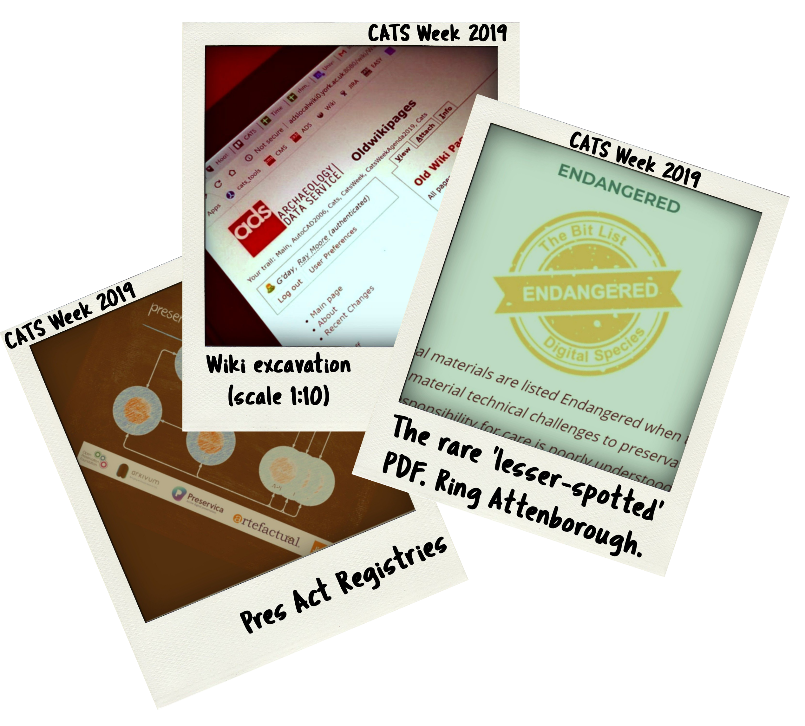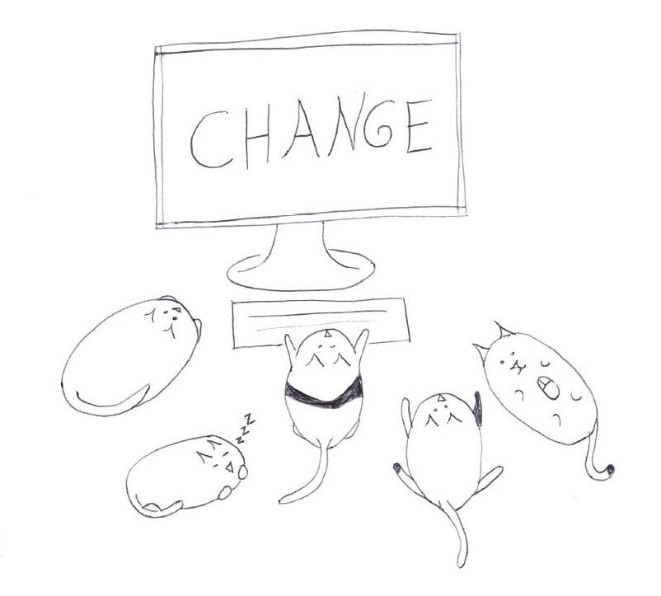Ray Moore is Digital Archivist at the Archaeology Data Service
Felis ADSus, a breed rarely seen beyond their natural habitat in the King’s Manor (York), were enticed from their lair into the wider world for their annual CATS (Curatorial And Technical Staff) week in September. With the continued support of the ADS director and management team, CATS week has become a feature in the ADS calendar in recent years allowing digital archivists to take time away from their daily activities to work on focused tasks and have those in-depth conversations about process, metadata and formats. The ‘catnip’ for any discerning digital archivist.

Felus ADSus in their natural habitat
(created using Pho to)
CATS week offered the opportunity for digital archivists to share knowledge gained from workshops and meetings attended throughout the last twelve months with colleagues. This year, following attendance at some amazing events run by the DPC*, included Leaflet, the International Image Interoperability Framework (IIIF) and Preservation Action Registries. Some genuinely useful discussions ensued and digital archivists are already making plans and roadmaps that will see the implementation of some of these services/approaches in the near future. As well as future developments, the forum also allowed digital archivists to talk about current projects including the work undertaken on behalf of High Speed 2.
The week also allowed the team some time to conduct its own archaeological ‘excavation’ into ADS history through an investigation of the ADS internal wiki (we do not get many chances these days to get our metaphorical trowel’s dirty). We sifted through the ‘contexts’ (pages), with the discovery of some amazing ‘treasure’ left by previous generations of repository staff, with some (redundant) content moved to the ADS’ ‘Wiki Page Memorial Garden’. It might be useful… one day.
 Like most colleagues we spent time looking at our existing holdings, in terms of preservation and dissemination formats, with an eye to an assessment of risk and sustainability. Thankfully, the DPC have done some amazing groundwork on this through their Technology Watch Reports series and the ‘Bit List’ initiative, and this formed the basis of the CATS assessment of current holdings. As all will know data curation is an active process, and whether the deposition occurred last week or 20 years ago, we always take time to revaluate preservation formats and pathways. The assessment did not throw up many spanners, but we will be keeping an eye on the latest thinking for those PDFs.
Like most colleagues we spent time looking at our existing holdings, in terms of preservation and dissemination formats, with an eye to an assessment of risk and sustainability. Thankfully, the DPC have done some amazing groundwork on this through their Technology Watch Reports series and the ‘Bit List’ initiative, and this formed the basis of the CATS assessment of current holdings. As all will know data curation is an active process, and whether the deposition occurred last week or 20 years ago, we always take time to revaluate preservation formats and pathways. The assessment did not throw up many spanners, but we will be keeping an eye on the latest thinking for those PDFs.
CATS are always looking to improve workflows and ensure the effective creation of technical metadata, so the planning of tools that allow repository staff to improve how they use and engage with the ADS’ Object Metadata Store (OMS) was certainly worthwhile. At the same time, we scoped out some tools that would facilitate the sharing of both collection and file-level metadata with data consumers. Use of our electronic submission system, ADS-easy, which collects metadata through a series of online forms and uploaders, continues to rise, but in order to join the circle we wanted to create some tools to get that metadata out again and share it in a more effective manner.
 Image credit: Teagan Zoldoske
Image credit: Teagan Zoldoske
CATS Week 2019, almost as quickly as it began, draws to a close; balls of string are safely returned to the cupboard and all catnip placed in a sealed container. We will continue to work on the outputs throughout the coming year and whilst most will be behind the scenes, do keep your eyes peeled for changes to the ADS website. A big thanks you to the ADS Director, Assistant Director and management team for their continued support of CATS Week. CATS will be out on the prowl soon, so come and find us and give us a stroke and a treat.
* other data preservation champions are available








































































































































